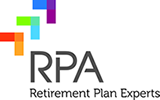ESOPs in General
Employee stock ownership plans (ESOPs) serve several purposes but, above all, they are retirement plans for employees. As such, they are governed by the Internal Revenue Code (“Code”) and the Employee Retirement Income Security Act (“ERISA”). ESOPs are different from other plans, however, since they: (1) are designed to hold primarily “qualifying employer securities”; (2) may borrow money from a related party, such as the sponsoring company; and (3) provide the additional incentive to employees that derives from sharing in the ownership of the company.
Uses for ESOPs
1. To buy the shares of a departing owner: Owners of privately held companies can use an ESOP to create a ready market for their shares. Under this approach, the company can make tax-deductible cash contributions to the ESOP to buy out an owner’s shares, or it can have the ESOP borrow money to buy the shares (see below). Once the ESOP owns 30% of all the shares in the company, the seller can reinvest the proceeds of the sale in other securities and defer any tax on the gain.
2. To borrow money at a lower after-tax cost: ESOPs are unique among benefit plans in their ability to borrow money. The ESOP borrows cash, which it uses to buy company shares or shares of existing owners. The company then makes tax-deductible contributions to the ESOP to repay the loan, meaning both principal and interest are deductible.
3. To create an additional employee benefit: A company can simply issue new or treasury shares to an ESOP, deducting their value (for up to 25% of covered pay for plan years after December 31, 2001; 15% for prior plan years) from taxable income. Alternatively, a company can contribute cash, buying shares from existing public or private owners. In public companies, which account for about 10% of the plans and about 40% of the plan participants, ESOPs are often used in conjunction with employee savings plans. Rather than matching employee savings with cash, the company will match them with stock from an ESOP, often at a higher matching level.
Caveats
As attractive as these tax benefits are, there are limits and drawbacks. The law does not allow ESOPs to be used in partnerships and most professional corporations. ESOPs can be used in S corporations, but do not qualify for the rollover treatment discussed above, and have lower contribution limits. Private companies must repurchase shares of departing employees, and this can become a major expense. The cost of setting up an ESOP is also substantial — $15,000 to $20,000 for the simplest of plans in small companies and on up from there. Any time new shares are issued, the stock of existing owners is diluted. That dilution must be weighed against the tax and motivation benefits an ESOP can provide. Finally, ESOPs will improve corporate performance only if combined with opportunities for employees to participate in decisions affecting their work.

